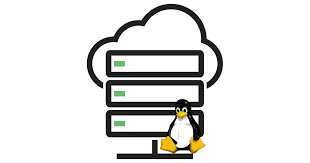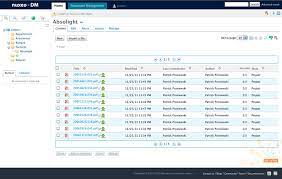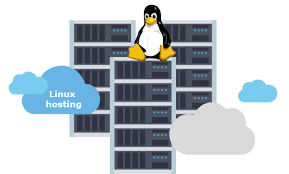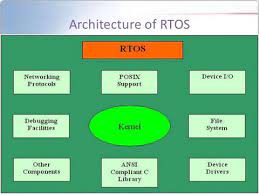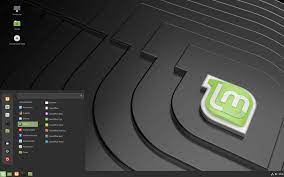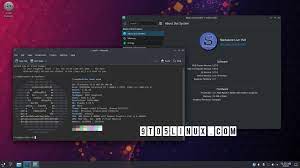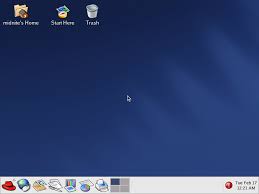Slackware: The Timeless Power of Simplicity
In the ever-evolving landscape of Linux distributions, one name stands out for its unwavering commitment to simplicity and stability – Slackware. Since its inception in 1993 by Patrick Volkerding, Slackware has remained true to its principles, attracting a loyal following of users who appreciate its straightforward approach to Linux.
At the core of Slackware’s philosophy is the belief that an operating system should provide users with complete control over their system without unnecessary complexity. Unlike many modern distributions that focus on user-friendliness and automation, Slackware embraces a more hands-on approach, allowing users to customize their system from the ground up.
One of the key strengths of Slackware lies in its simplicity. The installation process is straightforward and minimalistic, requiring users to make manual choices during setup rather than relying on automated scripts. This hands-on installation experience not only gives users a deeper understanding of their system but also allows them to tailor it precisely to their needs.
Slackware’s commitment to stability is another reason why it has garnered a dedicated user base over the years. The distribution follows a conservative release cycle, prioritizing reliability over cutting-edge features. This approach ensures that each release undergoes rigorous testing and only includes stable software packages. As a result, Slackware is known for its rock-solid performance and long-term support.
Another distinguishing feature of Slackware is its adherence to traditional Unix principles. The distribution embraces the simplicity and elegance of the command-line interface (CLI), making it an attractive choice for experienced Linux users who prefer working with text-based tools. While it does offer a graphical environment through X Window System, Slackware encourages users to explore the power and flexibility of the CLI.
One aspect that sets Slackware apart from other distributions is its package management system. Built around the venerable package format called “.tgz,” Slackware’s package manager allows for easy installation, removal, and upgrading of software packages. This simplicity in package management aligns with the distribution’s overall philosophy and makes it a favorite among those who value transparency and control.
Slackware’s community plays a vital role in its success. Despite being one of the oldest Linux distributions, Slackware has managed to maintain an active and helpful community of users and developers. The Slackware community is known for its friendly atmosphere, where users readily share their knowledge and assist newcomers in navigating the distribution’s intricacies.
While Slackware may not be the most beginner-friendly distribution, it offers a unique learning experience for those willing to delve into the inner workings of Linux. Its simplicity, stability, and respect for Unix traditions make it an ideal choice for enthusiasts, sysadmins, and anyone seeking a reliable platform that allows complete control over their system.
In a world where complexity often reigns supreme, Slackware remains steadfast in its commitment to simplicity. It continues to attract users who appreciate its no-nonsense approach to Linux while providing a solid foundation for building customized systems. With its timeless power and unwavering dedication to its core principles, Slackware stands as a testament to the enduring value of simplicity in the world of open-source software.
8 Essential Tips for Getting Started with Slackware
- Read the official documentation – Slackware has excellent, comprehensive documentation which can help you get started and answer any questions you may have.
- Familiarise yourself with the package manager – Slackware uses a package manager called ‘Slackpkg’ which makes it easy to install and update packages on your system.
- Use a text editor – Slackware does not come with a graphical text editor so you will need to use one from the command line such as vi or nano.
- Customise your installation – You can customise your installation of Slackware by editing configuration files in /etc/rc.d or using tools such as swaret or slapt-get for automated updates and installations of software packages.
- Utilise third-party repositories – There are several third-party repositories available that provide additional software packages for Slackware, including AlienBob’s repository and Slacky’s repository, which can be added to your package manager for easy access to extra software packages.
- Check out the forums – The official forums are an excellent source of information about all things related to Slackware, from troubleshooting tips to advice on how best to configure certain applications or features on your system; it is well worth spending some time reading through them before attempting any major changes or installations on your system!
- Install security updates regularly – As with any operating system, it is important to keep up-to-date with security patches and updates in order to protect yourself from potential vulnerabilities; this is particularly true when running a server as part of a networked environment where there may be more sensitive data at risk if left unprotected!
- Back up regularly – It is always wise to back up important files periodically in case anything goes wrong; this could be done either manually (e.g., using tar) or by setting up an automated backup script (e g., using rsync).
Read the official documentation – Slackware has excellent, comprehensive documentation which can help you get started and answer any questions you may have.
Unlocking the Power of Slackware: Embrace the Official Documentation
When venturing into the world of Slackware, one tip stands out as essential: take advantage of the official documentation. The creators of Slackware have painstakingly crafted a comprehensive resource that serves as a guide for both newcomers and seasoned users alike.
Slackware’s official documentation is renowned for its excellence, providing a wealth of information to help you navigate the intricacies of this unique Linux distribution. Whether you are just starting out or seeking answers to specific questions, this documentation is your gateway to unlocking the full potential of Slackware.
For beginners, the official documentation acts as a friendly mentor, guiding you through the installation process and introducing you to the fundamental concepts of Slackware. It explains key components such as package management, system configuration, and network setup in a clear and concise manner. With step-by-step instructions and helpful explanations, even those new to Linux can quickly grasp the essentials.
But it doesn’t stop there. The documentation delves deeper into advanced topics, offering guidance on system administration tasks, security measures, kernel customization, and much more. It serves as an invaluable reference for experienced users who want to fine-tune their system or troubleshoot any issues that may arise.
The beauty of relying on official documentation lies in its reliability and accuracy. As an authoritative source directly from the creators themselves, you can trust that it is up-to-date and reflects best practices for using Slackware. This ensures that you are working with accurate information tailored specifically to your distribution.
Additionally, exploring the official documentation allows you to tap into the collective wisdom of a vibrant community surrounding Slackware. From user forums to mailing lists, there are numerous resources available where fellow enthusiasts share their insights and experiences. By immersing yourself in this community-driven knowledge base alongside the official documentation, you gain access to a vast network of support that can enhance your understanding and proficiency with Slackware.
So, whether you are a newcomer eager to embark on your Slackware journey or a seasoned user seeking to expand your expertise, remember to consult the official documentation. It is an invaluable resource that will accompany you every step of the way, offering guidance and answering any questions you may have.
Embrace the power of knowledge and let Slackware’s official documentation be your trusted companion. Unlock the full potential of this remarkable Linux distribution and embark on a rewarding journey of exploration and mastery.
Familiarise yourself with the package manager – Slackware uses a package manager called ‘Slackpkg’ which makes it easy to install and update packages on your system.
Familiarize Yourself with Slackware’s Package Manager: Slackpkg
When it comes to managing software packages on your Slackware system, one tool that you should become acquainted with is the package manager called ‘Slackpkg’. This powerful utility simplifies the process of installing and updating packages, making it an essential tool for any Slackware user.
Slackpkg provides a straightforward and efficient way to handle software packages on your system. With its intuitive command-line interface, you can easily search for available packages, install new ones, upgrade existing ones, or remove unwanted software. This level of control allows you to keep your system up-to-date with the latest software releases and security patches.
Installing packages using Slackpkg is a breeze. You can simply specify the package name or use regular expressions to match multiple packages at once. The package manager takes care of resolving dependencies automatically, ensuring that all required components are installed correctly.
Updating your system with Slackpkg is equally simple. By running a single command, you can check for updates and download the latest versions of installed packages. This streamlined process ensures that you have access to the most recent bug fixes and feature enhancements without any hassle.
One of the notable features of Slackpkg is its support for official Slackware mirrors. These mirrors host repositories containing a vast collection of pre-compiled packages for different versions of Slackware. With a few configuration tweaks, you can easily switch between different mirrors or set up a local mirror for faster package downloads.
Slackpkg also offers additional functionalities such as blacklisting specific packages from being upgraded or removing them entirely from your system. This level of flexibility allows you to tailor your package management according to your specific needs and preferences.
To get started with Slackpkg, it’s recommended to read through its comprehensive documentation that provides detailed instructions on configuring and using the package manager effectively. By familiarizing yourself with this powerful tool, you will gain greater control over your Slackware system and enjoy a smoother software management experience.
In conclusion, Slackpkg is an invaluable asset for Slackware users. Its user-friendly interface and robust functionality make it a reliable companion for installing, updating, and managing packages on your system. By harnessing the power of Slackpkg, you can ensure that your Slackware environment remains up-to-date, secure, and tailored to your specific requirements.
Use a text editor – Slackware does not come with a graphical text editor so you will need to use one from the command line such as vi or nano.
Mastering the Command Line: Text Editors in Slackware
Slackware, known for its commitment to simplicity and control, offers a unique experience for Linux enthusiasts. One aspect that sets Slackware apart is its reliance on the command line interface (CLI) for various tasks. When it comes to editing text files, Slackware does not come bundled with a graphical text editor. Instead, users are encouraged to embrace the power of command line-based editors such as vi or nano.
While some may find this approach daunting at first, using a text editor from the command line can be a rewarding experience once you become familiar with it. Let’s explore two popular command line text editors available in Slackware:
1. Vi: Vi is a powerful and widely-used text editor that has been around for decades. It may seem intimidating at first due to its unique modes and commands, but mastering Vi can greatly enhance your efficiency when working with text files. It offers features like syntax highlighting, search and replace functionality, and the ability to edit multiple files simultaneously.
To open a file with Vi, simply type `vi filename` in the command line. Once inside Vi, you’ll need to switch between different modes – command mode for executing commands and insert mode for editing text. Pressing ‘i’ enters insert mode, allowing you to make changes to the file. To save changes and exit Vi, switch back to command mode by pressing ‘Esc’ followed by ‘:wq’ (write and quit).
2. Nano: If you prefer a more beginner-friendly option without sacrificing functionality, Nano is an excellent choice. It provides a user-friendly interface with on-screen menus that guide you through various operations. Nano supports syntax highlighting, search and replace functions, as well as other essential features expected from a modern text editor.
To open a file with Nano, simply type `nano filename` in the command line. The interface will display helpful shortcuts at the bottom of the screen. You can navigate through the file using arrow keys and make changes directly. To save changes and exit Nano, press ‘Ctrl + X’ to bring up the prompt, followed by ‘Y’ to confirm and ‘Enter’ to finalize.
Embracing a command line text editor may require a slight adjustment in your workflow, but it offers several advantages. Command line editors are lightweight, fast, and do not rely on graphical environments. They can be accessed remotely via SSH or used in recovery scenarios when graphical interfaces are unavailable.
By using a text editor from the command line in Slackware, you gain a deeper understanding of how files are manipulated and edited within the system. This knowledge empowers you to take full control over your text files and provides valuable skills that extend beyond Slackware itself.
So, whether you choose to master Vi’s powerful commands or opt for Nano’s user-friendly interface, embracing a command line text editor in Slackware opens up a world of possibilities for efficient editing and customization. Embrace the simplicity and power of command line editors in Slackware – you’ll soon discover their true potential!
Customise Your Slackware Installation: Unleash the Power of Personalization
One of the greatest strengths of Slackware lies in its flexibility and the ability to tailor your installation to suit your specific needs. By customizing your Slackware installation, you can create a personalized Linux environment that perfectly aligns with your preferences and requirements.
To embark on this journey of customization, look no further than the configuration files nestled within the /etc/rc.d directory. Here, you will find a treasure trove of options that allow you to fine-tune various aspects of your system. Whether it’s tweaking network settings, managing services, or adjusting system startup behavior, these configuration files provide a wealth of possibilities.
Editing these configuration files may seem daunting at first, but fear not – Slackware’s documentation and helpful community are there to guide you every step of the way. With a little patience and understanding, you can unlock the potential to mold your system according to your desires.
If diving into manual file editing isn’t your cup of tea, fret not – there are convenient tools available that simplify the process. Two popular choices among Slackware users are swaret and slapt-get. These package management tools enable automated updates and installations of software packages, making it easier for you to keep your system up-to-date without manually hunting down each update.
Swaret offers a command-line interface that allows you to effortlessly manage software packages by providing commands for updating, installing, or removing packages. Its simplicity and efficiency make it a go-to choice for many Slackware enthusiasts who prefer a hands-on approach.
On the other hand, slapt-get provides a user-friendly front-end for package management with easy-to-use commands resembling those found in Debian-based distributions. Slapt-get simplifies package installations and upgrades while keeping dependencies in check – all with just a few simple commands.
Both swaret and slapt-get offer efficient methods for managing software packages, saving you time and effort in maintaining your Slackware system.
By customizing your Slackware installation through manual configuration file edits or utilizing automated package management tools, you open up a world of possibilities. You can fine-tune your system to match your workflow, optimize performance, and ensure that the software packages you need are readily available.
Remember, the beauty of Slackware lies in its ability to empower users to take control of their Linux experience. Whether you choose the hands-on approach of editing configuration files or embrace the convenience of automated tools, customizing your Slackware installation allows you to create a truly personalized Linux environment that reflects your unique preferences and needs.
So go ahead, explore the depths of /etc/rc.d or embrace the efficiency of swaret and slapt-get. Unleash the power of customization and make Slackware truly yours.
Utilise third-party repositories – There are several third-party repositories available that provide additional software packages for Slackware, including AlienBob’s repository and Slacky’s repository, which can be added to your package manager for easy access to extra software packages.
Expanding the Horizons of Slackware: Utilizing Third-Party Repositories
One of the strengths of Slackware lies in its simplicity and stability. However, if you’re looking to broaden your software options beyond what is included in the official repositories, you’ll be pleased to know that Slackware offers a solution – third-party repositories. These repositories provide access to additional software packages, allowing you to enhance your Slackware experience with a wider range of applications.
One popular third-party repository for Slackware is AlienBob’s repository. Maintained by Eric Hameleers, also known as AlienBob, this repository offers a wealth of extra packages that are not included in the official Slackware distribution. From multimedia tools and desktop environments to development libraries and utilities, AlienBob’s repository provides a treasure trove of software options for users looking to expand their system’s capabilities.
Adding AlienBob’s repository to your package manager is a straightforward process. By following the provided instructions on the AlienBob website, you can easily configure your package manager to include this valuable resource. Once added, you’ll have access to an array of additional software packages that can be installed and managed just like any other package in Slackware.
Another notable third-party repository for Slackware is Slacky’s repository. Maintained by the Italian Slackware community, this repository offers an extensive collection of software packages that are not part of the official distribution. From productivity tools and multimedia applications to games and system utilities, Slacky’s repository caters to various user needs and preferences.
To make use of Slacky’s repository, visit their website and follow the provided instructions for adding it to your package manager. Once integrated into your system, you’ll gain access to an abundance of additional software packages that can be effortlessly installed and managed alongside your existing packages.
Utilizing these third-party repositories opens up new possibilities for customizing your Slackware system according to your specific requirements. Whether you’re seeking specialized software for a particular task or looking to explore alternative applications, these repositories offer a convenient way to expand the software ecosystem of your Slackware installation.
However, it is important to exercise caution when installing packages from third-party repositories. Ensure that the repository you choose is reputable and trustworthy, as the security and integrity of your system should always be a top priority. Stick to well-known repositories like AlienBob’s and Slacky’s, which have established themselves as reliable sources within the Slackware community.
By utilizing third-party repositories, you can enrich your Slackware experience by accessing additional software packages that complement the official distribution. Whether you’re an enthusiast, a developer, or simply someone who wants more options at their fingertips, these repositories provide a valuable resource for expanding the capabilities of your Slackware system. Embrace the flexibility and freedom that third-party repositories offer and unlock new horizons in your Linux journey with Slackware.
Check out the forums – A Treasure Trove of Slackware Knowledge
If you’re a Slackware user or considering diving into this venerable Linux distribution, there’s an invaluable resource waiting for you – the official forums. These forums are a treasure trove of information, offering a wealth of knowledge on all things related to Slackware.
Whether you’re troubleshooting an issue, seeking advice on configuring specific applications, or looking for tips on optimizing your system, the official Slackware forums are an excellent place to start. The community is filled with experienced users and experts who willingly share their wisdom and help fellow enthusiasts navigate the intricacies of Slackware.
Before embarking on any major changes or installations on your system, it’s highly recommended to spend some time reading through the forums. You’ll find threads discussing various topics, ranging from hardware compatibility and driver issues to software recommendations and customization tips. Chances are high that someone has encountered a similar challenge before and has shared their solution or workaround.
By exploring the forums, you can tap into a vast pool of collective knowledge that can save you time and frustration. The discussions often provide step-by-step guides, detailed explanations, and even scripts to automate certain tasks. You may discover new tricks or discover alternative approaches that enhance your Slackware experience.
Beyond technical assistance, the forums also foster a sense of community among Slackware users. It’s a place where people share their success stories, showcase their setups, and engage in friendly conversations about their passion for this distribution. You’ll find like-minded individuals who appreciate the simplicity and stability that Slackware offers.
To access the official Slackware forums, simply visit their website and navigate to the community section. Registering an account is usually quick and straightforward. Once you’re in, take some time to browse through different categories relevant to your interests or use the search function to find specific topics.
Remember that while the forums are an excellent resource, it’s always important to exercise caution and verify information from reliable sources. Double-check any commands or instructions shared by other users before implementing them on your system. Additionally, be respectful and follow the forum guidelines to maintain a positive and helpful community environment.
So, if you’re seeking a wealth of information, troubleshooting tips, or simply want to engage with fellow Slackware enthusiasts, don’t miss out on the official forums. They are a valuable asset that can enhance your Slackware journey and help you make the most of this powerful Linux distribution.
Install security updates regularly – As with any operating system, it is important to keep up-to-date with security patches and updates in order to protect yourself from potential vulnerabilities; this is particularly true when running a server as part of a networked environment where there may be more sensitive data at risk if left unprotected!
Protecting Your Slackware System: Install Security Updates Regularly
In today’s interconnected world, where cyber threats are constantly evolving, ensuring the security of your operating system is paramount. Slackware, known for its simplicity and stability, is no exception. To safeguard your Slackware system and protect yourself from potential vulnerabilities, it is crucial to regularly install security patches and updates.
Just like any other operating system, Slackware releases security updates to address known vulnerabilities and strengthen the overall security of the system. These updates are designed to patch any weaknesses that may have been discovered, ensuring that your system remains resilient against potential attacks.
When running a server as part of a networked environment, it becomes even more critical to keep up-to-date with security updates. Servers often handle sensitive data and provide services to multiple users or devices. Neglecting regular security updates can leave these systems vulnerable to exploitation by malicious actors seeking unauthorized access or data breaches.
By installing security updates promptly, you minimize the risk of potential vulnerabilities being exploited. These updates include patches for software components such as the kernel, libraries, network protocols, and various applications that are essential for the smooth functioning of your Slackware system.
Slackware provides a reliable package management system that simplifies the process of updating your system with the latest security patches. The package management tools allow you to easily identify and install available updates without much hassle.
To ensure you stay protected:
- Regularly check for available security updates using the package management tools provided by Slackware.
- Follow best practices recommended by Slackware’s official documentation or community resources regarding update procedures.
- Set up automatic notifications or reminders to prompt you when new security updates are released.
- Schedule regular maintenance windows dedicated to applying these updates promptly.
Remember that maintaining a secure system is an ongoing effort. Cyber threats continue to evolve rapidly, and developers work diligently to address emerging vulnerabilities promptly. By staying vigilant and regularly installing security updates, you fortify your Slackware system’s defenses and minimize the risk of potential security breaches.
Protecting your data and ensuring the integrity of your system should always be a top priority. By prioritizing the installation of security updates on your Slackware system, you take a proactive step towards maintaining a secure and reliable computing environment.
Back up regularly – It is always wise to back up important files periodically in case anything goes wrong; this could be done either manually (e.g., using tar) or by setting up an automated backup script (e g., using rsync).
Back up regularly – Safeguarding Your Valuable Data in Slackware
In the world of computing, unexpected events can occur at any time, potentially leading to the loss of important files and data. To protect yourself from such unfortunate incidents, it is essential to make regular backups of your valuable files. This tip holds true for all operating systems, including Slackware.
Slackware, known for its simplicity and stability, provides users with the flexibility to choose their preferred method of backing up files. Whether you prefer a manual approach or an automated script, Slackware offers various options to ensure the safety of your data.
One simple method is to manually create backups using tools like “tar.” Tar is a command-line utility that allows you to compress and archive files or directories into a single file. By creating tar archives periodically, you can store copies of your important files in a compressed format. These archives can then be stored on external storage devices or uploaded to cloud storage services for added security.
For those seeking a more automated solution, Slackware offers the option of setting up backup scripts using tools like “rsync.” Rsync is a powerful utility that synchronizes files and directories between different locations. By configuring an rsync script, you can define specific source and destination directories and schedule regular backups at desired intervals. This ensures that any changes made to your important files are automatically mirrored in a backup location.
When deciding on your backup strategy in Slackware, it’s important to consider both the frequency and location of your backups. Regularly backing up your data helps minimize potential losses by ensuring that recent changes are captured. Additionally, storing backups in separate physical or remote locations provides an extra layer of protection against hardware failures or disasters.
Remember that backing up isn’t just about protecting against hardware failures; it also guards against accidental deletions, malware attacks, or system errors. Losing valuable data can be devastating, but with regular backups in place, you can restore your files and resume your work with minimal disruption.
In conclusion, regardless of the operating system you use, including Slackware, regularly backing up your important files is a wise practice. Whether you choose to create manual backups using tools like tar or set up automated backup scripts with rsync, the key is to establish a routine that ensures the safety of your data. By taking this proactive step, you can have peace of mind knowing that your valuable files are protected from unexpected events and potential loss.



